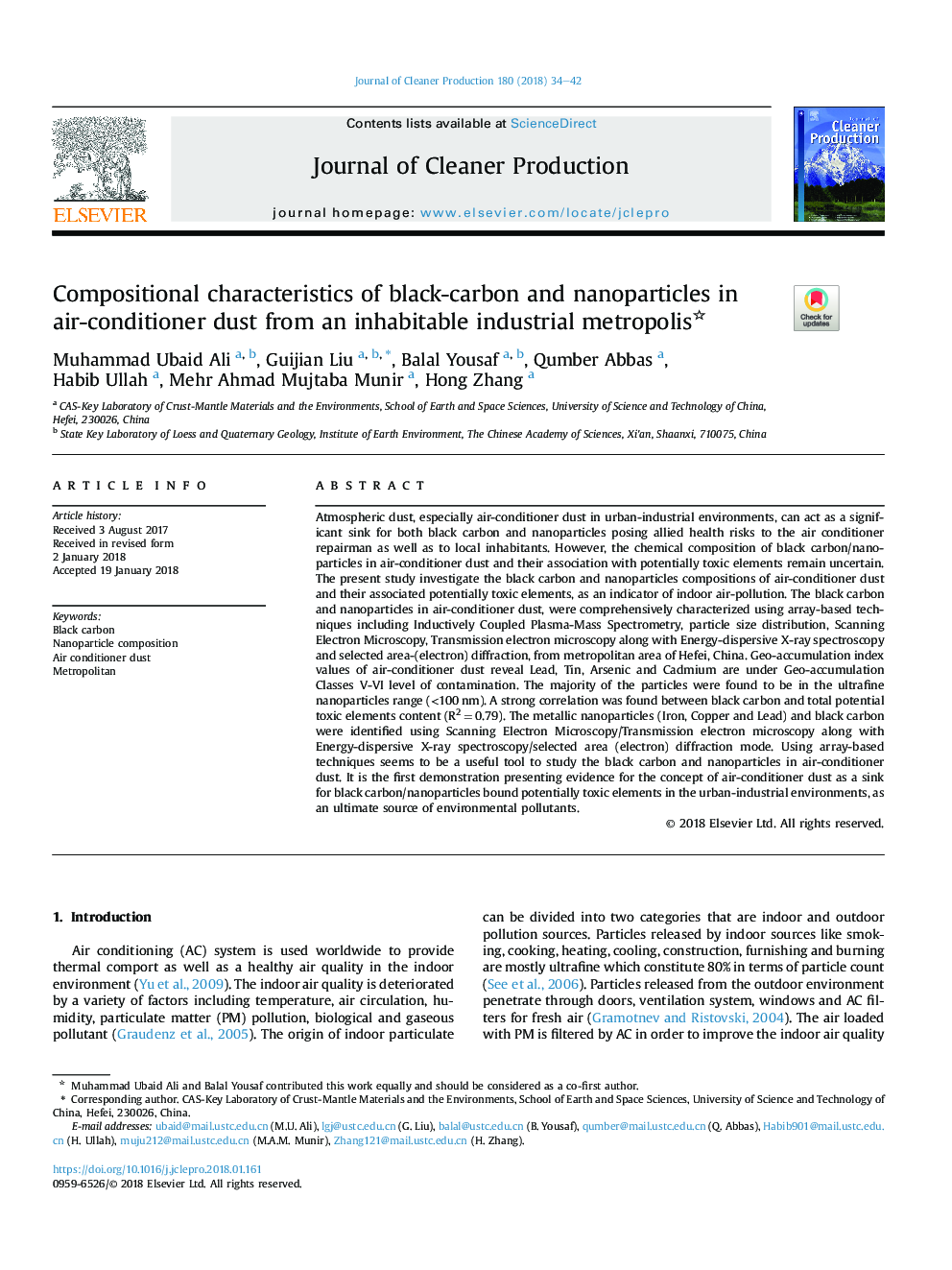| کد مقاله | کد نشریه | سال انتشار | مقاله انگلیسی | نسخه تمام متن |
|---|---|---|---|---|
| 8097831 | 1522073 | 2018 | 9 صفحه PDF | دانلود رایگان |
عنوان انگلیسی مقاله ISI
Compositional characteristics of black-carbon and nanoparticles in air-conditioner dust from an inhabitable industrial metropolis
ترجمه فارسی عنوان
ویژگی های ترکیبات سیاه و کربن و نانو ذرات در گرد و غبار تهویه هوا از یک کلان شهر صنعتی قابل سکونت
دانلود مقاله + سفارش ترجمه
دانلود مقاله ISI انگلیسی
رایگان برای ایرانیان
کلمات کلیدی
کربن سیاه، ترکیب نانوذرات، گرد و غبار تهویه هوا، متروپولیتن،
موضوعات مرتبط
مهندسی و علوم پایه
مهندسی انرژی
انرژی های تجدید پذیر، توسعه پایدار و محیط زیست
چکیده انگلیسی
Atmospheric dust, especially air-conditioner dust in urban-industrial environments, can act as a significant sink for both black carbon and nanoparticles posing allied health risks to the air conditioner repairman as well as to local inhabitants. However, the chemical composition of black carbon/nanoparticles in air-conditioner dust and their association with potentially toxic elements remain uncertain. The present study investigate the black carbon and nanoparticles compositions of air-conditioner dust and their associated potentially toxic elements, as an indicator of indoor air-pollution. The black carbon and nanoparticles in air-conditioner dust, were comprehensively characterized using array-based techniques including Inductively Coupled Plasma-Mass Spectrometry, particle size distribution, Scanning Electron Microscopy, Transmission electron microscopy along with Energy-dispersive X-ray spectroscopy and selected area-(electron) diffraction, from metropolitan area of Hefei, China. Geo-accumulation index values of air-conditioner dust reveal Lead, Tin, Arsenic and Cadmium are under Geo-accumulation Classes V-VI level of contamination. The majority of the particles were found to be in the ultrafine nanoparticles range (<100â¯nm). A strong correlation was found between black carbon and total potential toxic elements content (R2â¯=â¯0.79). The metallic nanoparticles (Iron, Copper and Lead) and black carbon were identified using Scanning Electron Microscopy/Transmission electron microscopy along with Energy-dispersive X-ray spectroscopy/selected area (electron) diffraction mode. Using array-based techniques seems to be a useful tool to study the black carbon and nanoparticles in air-conditioner dust. It is the first demonstration presenting evidence for the concept of air-conditioner dust as a sink for black carbon/nanoparticles bound potentially toxic elements in the urban-industrial environments, as an ultimate source of environmental pollutants.
ناشر
Database: Elsevier - ScienceDirect (ساینس دایرکت)
Journal: Journal of Cleaner Production - Volume 180, 10 April 2018, Pages 34-42
Journal: Journal of Cleaner Production - Volume 180, 10 April 2018, Pages 34-42
نویسندگان
Muhammad Ubaid Ali, Guijian Liu, Balal Yousaf, Qumber Abbas, Habib Ullah, Mehr Ahmad Mujtaba Munir, Hong Zhang,
